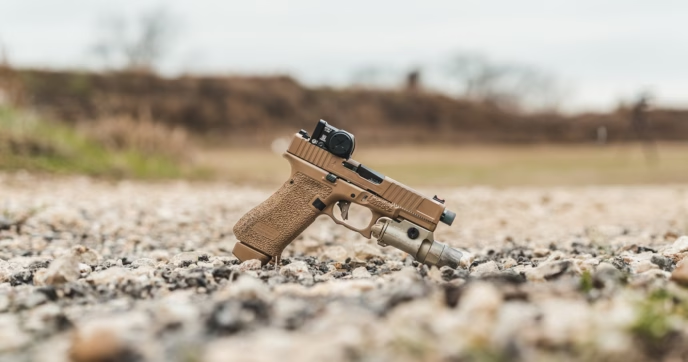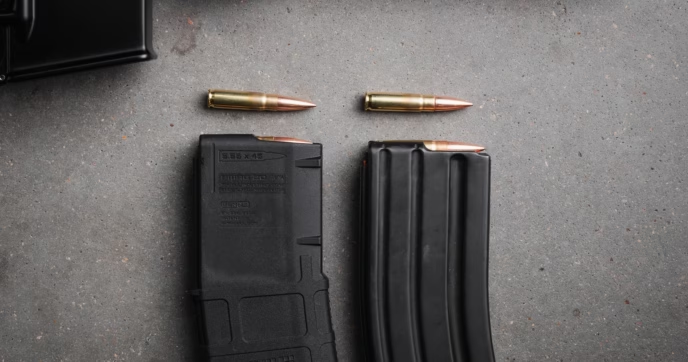One of the oldest and most popular firearm variants is the tried-and-true shotgun. Shotguns have evolved significantly since their inception in the 16th century. So much so that today, there’s a broad spectrum of specialized shotgun variants available for different purposes.
Though shotguns have changed drastically as time has progressed, one key aspect of them has stayed relatively the same for well over a century—their ammo. Unlike rifles that fire a single projectile from a cartridge, shotguns use shotshells that enable the discharge of multiple projectiles at once, distinguishing them from their rifle counterparts.
As you likely know, modern shotshells are designed with a combination of brass and plastic instead of a single material like brass or steel. These shells are the host to a variety of projectile types, ranging from conventional options like slugs and buckshot to oddballs like flechette and dragon’s breath. Variety like this makes shotguns a worthy inclusion in anyone’s personal collection, but like with rifles, they’re available in different chamberings.
If you’re unfamiliar with them, a shotgun’s ‘gauge’ is essentially the same as a rifle’s ‘caliber’. It’s the size shell that shotgun utilizes, and while there are a lot of different sizes, by far the most common are 12 and 20 gauge. We’re looking at both gauges to go over their differences and what you should consider before buying one over the other.

Choosing the Right Gauge: Factors to Consider
So, what exactly are the differences between 12 Gauge and 20 Gauge? Simply put, their size is the key difference. 12-gauge has a .729-inch bore diameter while 20 gauge has a .615-inch diameter. As a result, the larger size of the 12-gauge shell gives it more space to store powder and the shot, effectively giving it a larger payload.
This is by no means meant to downplay the power of the 20-gauge shotshell. Though it doesn’t have as much power as its bigger brother, it’s still capable of being loaded with most of the shot sizes a 12 gauge can use. If you’re on the fence about which gauge you should get, below are some factors to consider helping you narrow down your choices.

Intended Use
Shotguns have a lot of usage outside of being a fun range gun. They’re commonly used for home defense, sport shooting, and hunting. It’s so common that most manufacturers often sell specialized versions of their shotguns that are tailored for these purposes. Both 12 and 20 gauge are great options for all purposes and they both have many shell loads for each one.
That said, depending on your purpose, you might be better off opting for 12 gauge over 20 gauge. Competitions, for instance, often require the use of 12-gauge shells to make it as even a competition as possible. There are competitions where you can use 20-gauge shells, but they aren’t nearly as common, and are often used in youth competition leagues.
Likewise, 12 gauge is also a great hunting shell size. Hunting large game like Deer can be done with a 20-gauge shotgun, but the wider ammo variety 12-gauge provides makes it much easier to effectively take down large game animals. For hunting smaller game like birds and rabbits, for example, a 20-gauge shotgun is a solid choice.
Still, while the lighter recoil impulse of 20-gauge makes shotguns easier to shoot, the lower velocities and limited shot pellet counts make it less than ideal in certain applications. For most applications, 12-gauge shotgun shells are the better choice since they boast higher velocities, have more shot diversity, and can hold more shot pellets comparatively.
Recoil Management and Comfort
12 gauge, with its larger shell size, will have more felt recoil than 20 gauge, but it provides a greater payload since it can hold more powder and pellets. 20-gauge shotguns, in contrast, are lighter recoiling but won’t have as much potency as 12 gauge.
Ultimately, it comes down to your personal preference; if you want something with a softer recoil impulse, a 20 gauge is a solid choice, but if you don’t mind the increase in felt recoil and want some extra power, 12 gauge is the better option.
Ammo Availability
Since both 12 and 20 gauge are some of the most popular chamberings for shotguns, there is a lot of ammo available for each. We mentioned before that there’s a wide array of shot types for shotguns, with some popular examples being slugs, buckshot, and birdshot. Most of the shot types that are available for a 12 gauge are also available for a 20 gauge, but certain types, like 00 and 000 Buckshot, are too big for 20-gauge shells.
Additionally, there isn’t much difference in cost between the two. Depending on the brand, the price for the same shot type is usually similar for both gauges. However, most of the bulk ammo you’ll find will be for 12-gauge shells, since 12-gauge is more commonly bought for competitions and hunting. For standard ammo boxes, though, most times you can expect to pay anywhere from roughly $8 to $20 for a box of 5 shells. Keep in mind that these prices can fluctuate depending on sales and the shot type you choose.

Shot Patterns
There are a lot of factors that play into a shotguns pattern, and the main one is the choke. A choke is a device that threads into the end of a shotgun’s barrel that controls the shot spread. Chokes help maintain tighter spreads over distance, enhancing accuracy for specific applications like hunting and sport shooting.
Something else to consider is the shell size. The larger a shotshell is, the more projectiles it can hold. For example, a standard 2 ¾-inch 12-gauge shotshell can hold eight pellets, or shot, of 00 Buckshot, but a larger 3 ½-inch shell can hold up to twelve. This notion is true for 20-gauge shells and shot types as well. Generally, the more ‘shot’ a shell can carry, the denser the pattern will be.
Due to this, 12-gauge shotguns can keep a denser shot pattern for longer distances. For shooting at distance, 12-gauge is the more capable option for most long-distance applications. At closer ranges though, the lower velocities and less dense shot patterns of 20-gauge make it a great option for upland bird hunting, small game hunting, and sport shooting. Just remember, if you opt for a 20-gauge shotgun, you won’t have as many shot types to choose from.
Which Should You Pick?
Depending on your needs, either shell gauge can be a great option. Your needs will dictate which of the two is best. If you’re looking for something that doesn’t have a large felt recoil impulse but is still versatile for multiple applications, 20 gauge is great. If you don’t mind the greater recoil or want access to higher power loads and larger shot sizes, a 12 gauge is the one for you. Something to keep in mind though, is that 12 gauge is suitable for almost all purposes.
Types of Shotguns
Now that you have an idea of which shotgun gauge works best for you, you’re ready to pick one out. If you’re a newcomer to the platform, there are a few distinct variants you can expect to find, with the most common ones being pump-action and semi-automatic shotguns. Each can be found in 12 or 20 gauge and have their own benefits. So, it’s important to know the difference between them to get an idea of which variant works best for you.

Pump Action Shotguns
Pump action shotguns stand out for their simplicity and dependability, making them one of the most preferred designs. As its name suggests, it’s a shotgun that uses a pump to cycle the action, chambering and ejecting shotshells. They’ve been in use for a long time as well, with some of the first models dating back to 1892. Pump actions are great for all purposes, and they’re often more affordable than most other shotgun types. As such, it’s common to see them being recommended for home defense, hunting, and recreation.
Among the renowned 12-gauge pump-action shotguns are the Remington 870, various Mossberg models such as the 500 and 590, and the historic Winchester Model 1897. Notably, all these models, except for the Winchester 1897, are also offered in 20-gauge versions. These shotguns are incredibly reliable and simple to use, but since you have to manually eject and load shot shells, they tend to have a slower fire rate compared to something like a semi-automatic shotgun.
If you’re interested in a pump action shotgun but want more information on them, our guide on pump action shotgun parts will round out your knowledge on the platform.

Semi-Automatic Shotguns
Semi-automatic shotguns offer a convenient alternative to pump-action models by utilizing gas-operated or direct blowback systems to cycle the action. This design allows for quicker follow-up shots, making semi-automatic shotguns a preferred choice for hunting, duty, competitive shooting, and personal defense.
A few of the most popular semi auto shotguns are the Benelli M4, Beretta A300, Browning A5, and the Mossberg 930. These shotguns come in multiple configurations as well. You can commonly find them equipped as tactical semi-auto shotguns, with the Benelli M4 and Beretta A300 Ultima Patrol being among the most popular options.
There are a fair number of 20-gauge options as well, but something to consider is that there aren’t as many tactical models available. Noteworthy 20-gauge semi-automatic shotguns include the Mossberg SA-20 and Beretta A300 Ultima.
Conclusion
Shotguns are still a top choice among firearms enthusiasts for their versatility, reliability, and enjoyment across many activities. Still, with the ever-present debate of 12 gauge vs. 20 gauge continuing, it can be tough to discern which is the best amongst the two, especially since they’re both great options, depending on your shotgun’s purpose, that is.
12 gauge shot shells, known for their higher recoil impulse, offer a wider array of shot load options and shot pellet counts, making it particularly well suited for hunting and competitive shooting. Especially since it’s the standard gauge for most competitions and the better shotshell size for large game hunting.
20 gauge, on the other hand, offers a lighter recoil impulse but has fewer shot size options and less shot pellets per shell. While this makes it easier for new enthusiasts or those seeking a less intense shooting experience to get into shotguns, they lack the degree of versatility that 12-gauge shotguns provide. Still, it’s a great shell gauge for small game hunting and for sporting clays.
Regardless of your choice, incorporating a shotgun into your collection ensures a versatile and satisfying shooting experience. If you’re shopping with defense in mind, our article on tactical shotguns for home defense breaks down everything you’ll need to know before buying.





